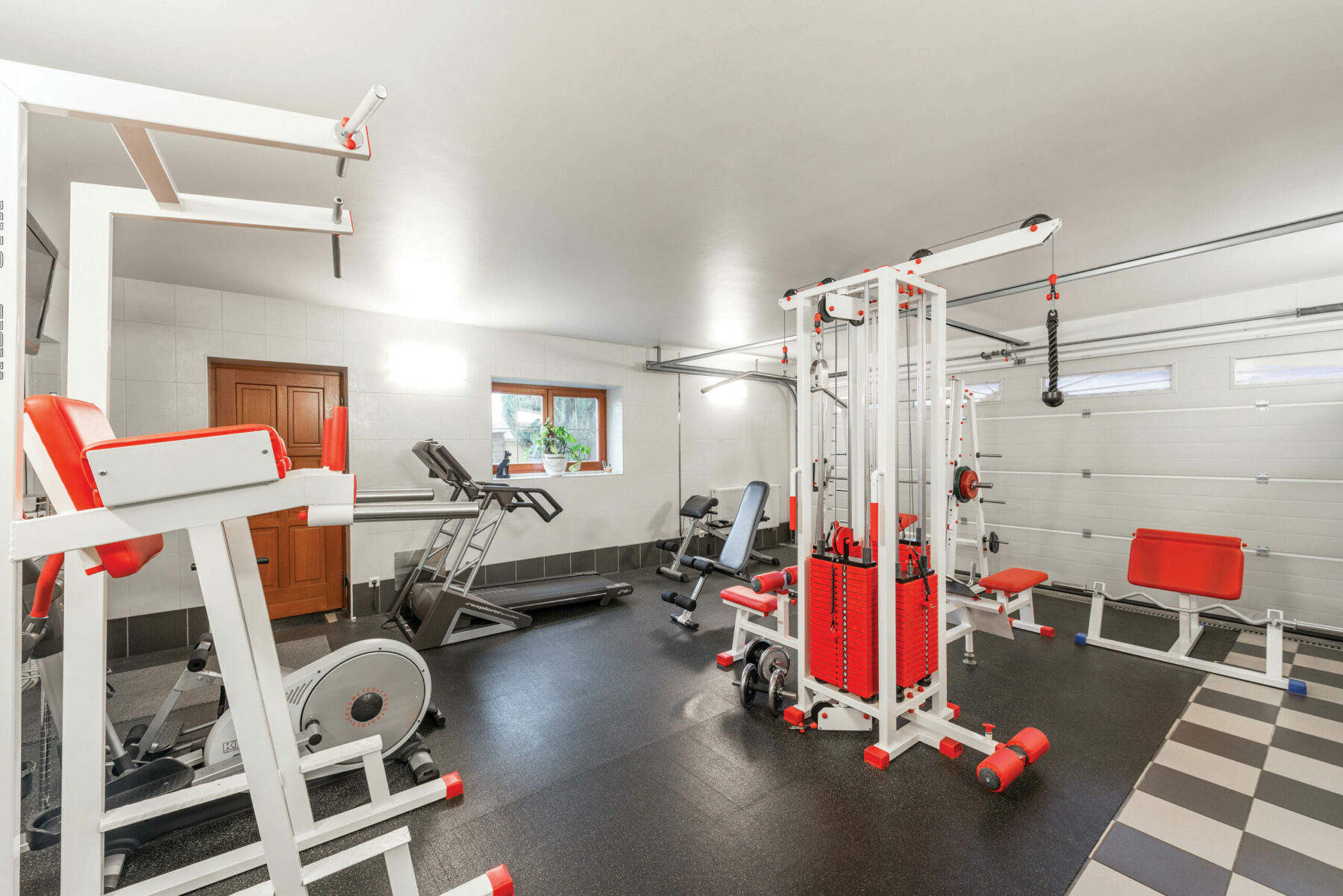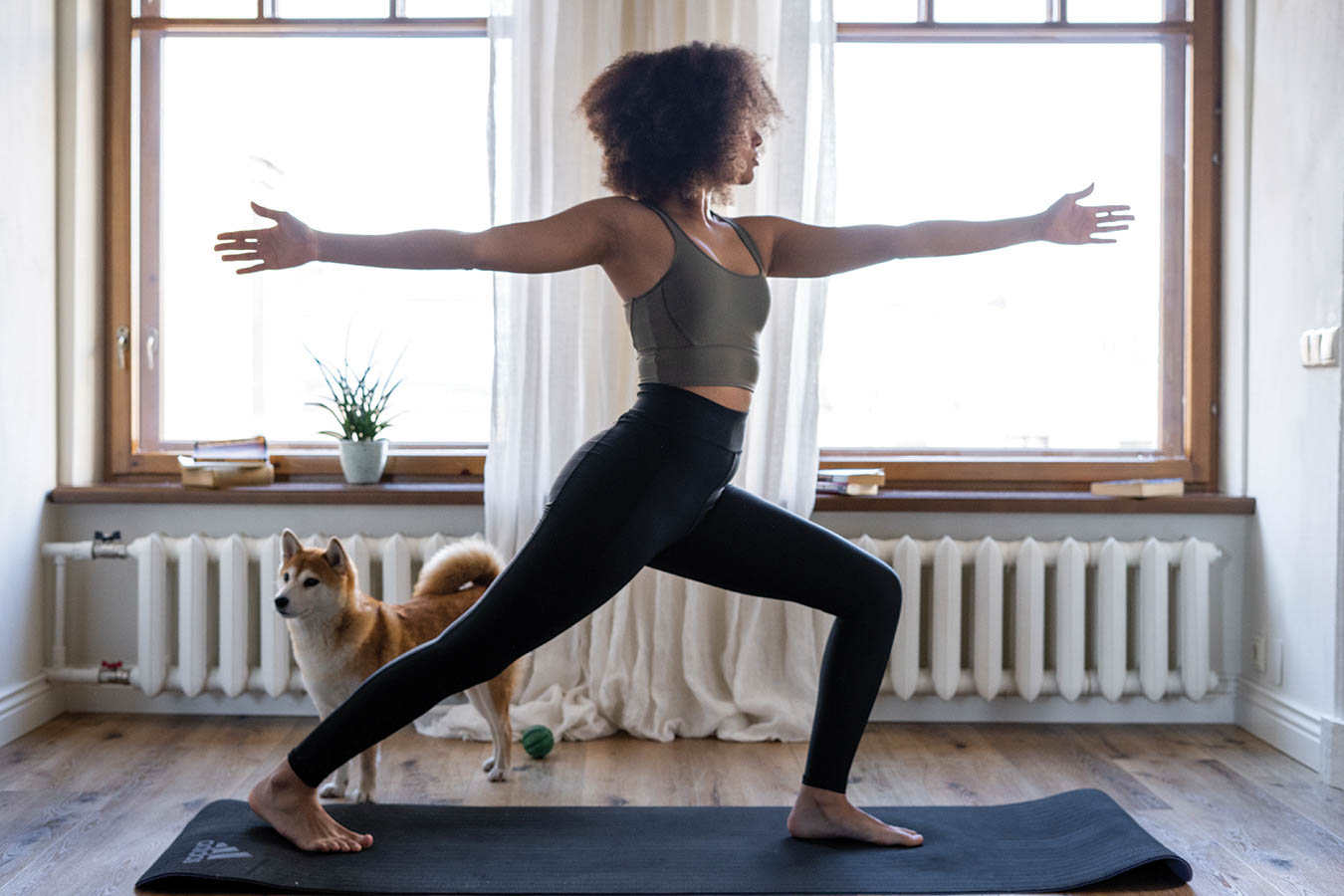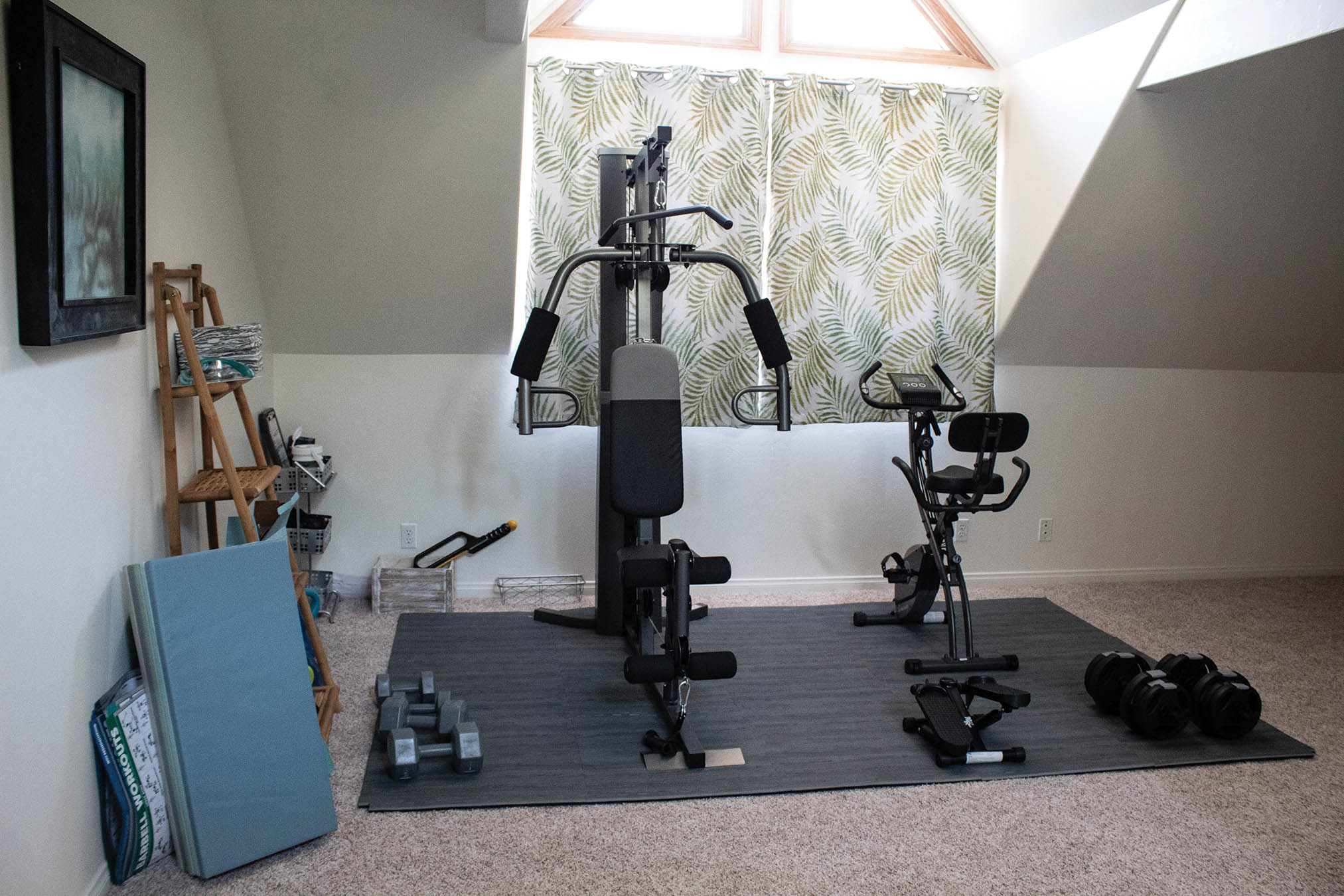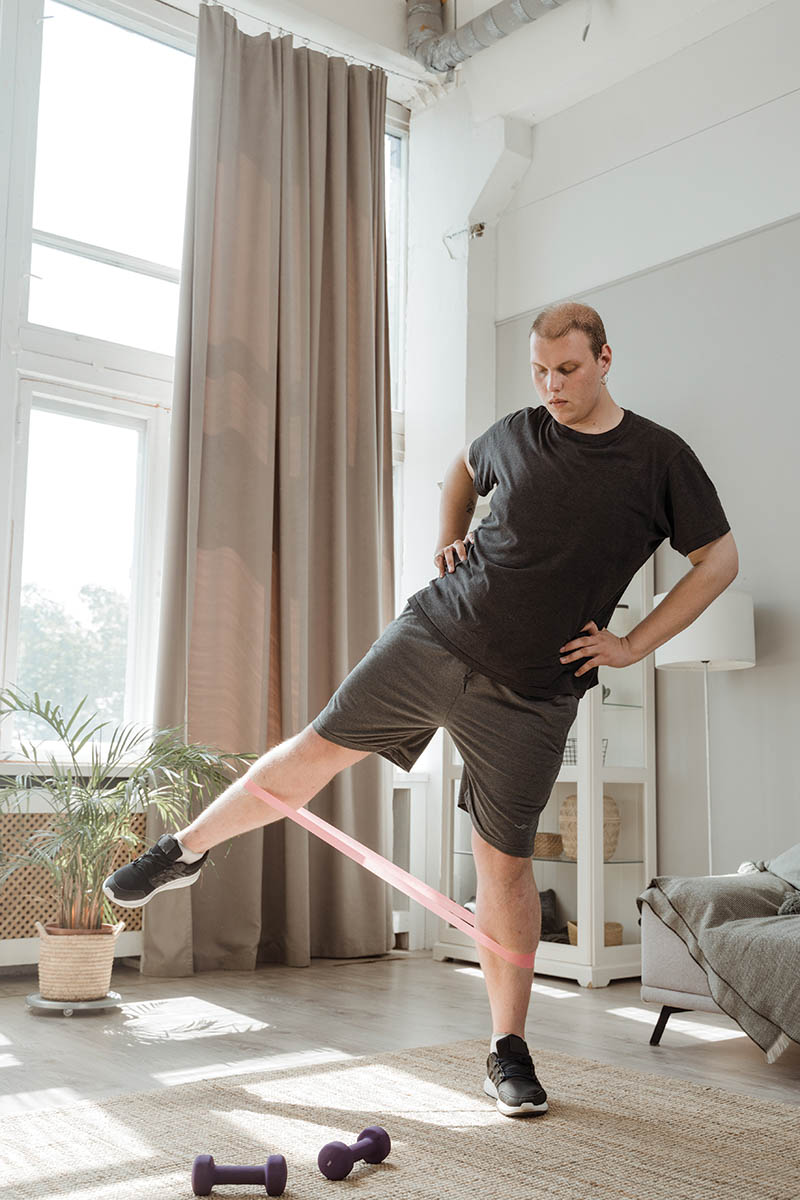How to Build an At-Home Gym

Whether you’re turning a room in your home into a gym or clearing a space to use as needed, transforming a space depends largely on its intended use. Working out from home has become increasingly popular, and creating an enjoyable space could be the motivation necessary to move more.
Plan for context

First, consider functionality — what is your intention for the space? If you’re replacing an entire gym membership, a room or garage remodel might be best. This kind of training requires more equipment, thus more space.
If you simply want a quiet area for meditation, core work or a quick pilates class, finding a corner of your home might be the solution. Small corners can be restrictive, though, so make sure you can stretch each arm and leg out without hitting a wall or object.
Discerning what equipment you need or already own is important as well, as the space needs to be big enough to house everything and provide necessary electricity. You also must consider if you can use the equipment correctly in the space. Are the ceilings high enough for a jump rope? Is the room long enough for battle ropes? If you’re using a TRX, can you safely position a wall mount where it allows you to angle your body in all directions for full use?
Also, keep in mind the location of your space. Garage conversions make great gyms as do small, backyard sheds. But will this encourage frequent visits to your gym or remain “out of mind, out of sight”? Closing the door to the newly remodeled guest-room-turned-gym also makes ignoring your workout easier.
By designating a corner of a room you frequent often, you may be more inclined to use it. Notice if your designated spot is upstairs or downstairs — will the plyometric movement impact the ceiling below? If you intend to use a wall ball, how might that impact neighbors on either side?
Fill it up

Creating an inspiring spot is where the fun begins. Having a home gym means you can add personal touches, such as art, artifacts, plants or custom lighting. You get to build your own atmosphere and experience that you enjoy being in.
Good flooring, or a supportive mat, is key to any workout space. Consider installing a professional rubber gym floor to protect your joints. The same rings true for a thick, non-slip mat. If you plan to spend a lot of time in your new space, supportive flooring will help prevent unnecessary slipping during yoga or a potential knee injury from jumping on a hard surface consistently. Mats are also available in double sizes so if you can’t cover the entire floor with professional-grade flooring, you can still have support in one section of your space.
Think about ventilation and whether you need to add a free-standing fan or install ceiling fans. Summers can be balmy, and working out in a hot, uncomfortable room could provide another excuse to avoid working out. Curtains and blinds for large windows during the warmer months will help cool the room and provide outdoor inspiration and scenery when the weather is cooler. Position your equipment so you can use the natural light, and add windows or large doors you can open.
Adding full-length mirrors will create the illusion of space for smaller gyms and are necessary for evaluating form and progress. Add two or three decorative mirrors in a line along one wall for impact.
Lighting is another key component to consider when designing your ideal workout spot. Remember the room’s function. If you plan to spend time meditating, practicing yoga or tai chi, create a mood with soft lightning, lamps and dimmers that you can control. If you are planning high-impact cardio on a treadmill or bike, consider adding colorful LED lights that correspond to the beat of the music for full effect.
Depending on what kind of workouts you plan to do, finding a wall to mount a television could be a must-have, as well as making sure your favorite audio can be played. If you plan to stream workouts from the TV, you’ll want to have your equipment and mat set up accordingly in front of it, which might require some rearranging. Having the spot set up, ready to go with mats and weights nearby, will prevent any excuses from creeping in. Make sure you’re logged in to any apps you use and find those workouts you love in advance.
Storing your equipment

Storing your equipment takes planning as well. Weight racks can be bulky and unattractive, so use shelving units that reflect your personality instead. Decorative baskets and bins can house rolled-up mats as well or find foldable mats for inside a drawer. Installing wall mounts, hooks and shelving for things like towels, bands and foam rollers create visibility so you’ll never forget what you have or where it is and keep equipment safely off the floor. Find a spot where you can store a few water bottles and any necessary cleaning supplies, as well as a large whiteboard or chalkboard for goals, inspiring quotes or workout plans.
Ultimately, you might set up your home gym and realize you don’t use half of the equipment you thought you might, your lighting isn’t working well or it feels stuffy after a good sweat session. You’ll only know when you get in and use it to know how well it’s working!
About the Author

Emma Aguirre’s training career began with spinning almost 20 years ago in a small women-only gym in South Texas. After a career in journalism, Emma switched to fitness full time, certifying in Practical Pilates, TRX and Jillian Micheals BodyShred program. She is also qualified as an AFAA Group Fitness professional and holds several personal trainer certificates, as well as Precision Nutrition’s Level 1 certification. She is currently certifying as an International Sports Sciences Association master trainer and spends her days coaching clients online as a Personal Health Advisor at Austin’s Wellthy Soul.






